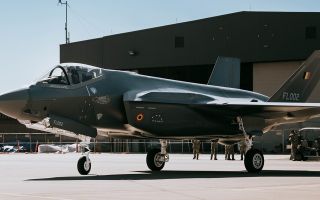
France announces first test of prototype hypersonic glider weapon system

France says it has carried out the first test of a prototype hypersonic glider.
Its defence procurement agency, Direction générale de l'armement (DGA), said a rocket carrying the VMAX glider launched from the Biscarosse missile test site in the Bay of Biscay, in the southwest of the country.
It said that the flight contained technological innovations and added that data had been collected and is being analysed to understand more for the future.
- Rockets, missiles and fighting vehicles in new US $500m aid package for Ukraine
- Joint Helicopter Command to evolve with focus on drones as Army chief unveils structural changes
- Ben Wallace says UK-sent Storm Shadow missiles having 'significant impact' in Ukraine
Weather agency Météo Pyrénées tweeted a picture of unusual vapour trails in the sky.
Hypersonic is a term which means flight at speeds faster than five times the speed of sound, or Mach 5.
Hypersonic gliders are unpowered vehicles which can manoeuvre at speeds greater than Mach 5 and typically use conventional rockets to propel the glider to a high altitude tens of kilometres above the earth before the glider is released and its payload drops back down to earth at hypersonic speeds.
Several major world powers with nuclear capabilities have been researching the use of such hypersonic weapons for years and such glider systems are being designed to carry nuclear or conventional warheads.
Hypersonic gliders can change direction at high speed, unlike ballistic missiles whose trajectories are set at launch.
Traditional intercontinental ballistic missiles exceed Mach 5 speeds but follow a predictable trajectory.
They can be detected early in flight, making it possible for them to be intercepted.
Hypersonic missiles work differently, exploiting physics and using drag and friction so they can fly in all directions like an aircraft but at very high speeds, making them harder to detect and intercept in time to stop.







